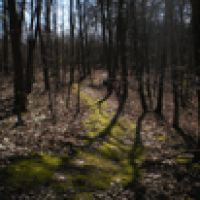Zhang et al., 2014
Soil Layering and Preferential Flow Impacts on Seasonal Changes of GPR Signals in Two Contrasting Soils.
Zhang, J., H.S. Lin, and J. Doolittle (2014)
Geoderma, 213:560–569
Abstract
Experimental evidence has shown that soil layering can significantly alter water movement through soil profiles, especially in sloping landscapes. Detailed knowledge of soil layering and its position in the landscape is therefore necessary for determining dynamic subsurface flow. In this study, we used Ground Penetrating Radar (GPR) in combination with high resolution real-time soil water monitoring to investigate seasonal changes in GPR signals to identify soil horizon interfaces and their impacts on water flow in two contrasting soils. The results showed that 1) in the deep Rushtown soil located in a concave hillslope, GPR reflections in the Bw–BC and BC–C horizon interfaces became clearer as soil became wetter. Such increased contrast along interfaces was due to the presence of water associated with water-restricting BC horizon and lateral flow from upslope area; and 2) in the shallow Weikert soil located in a planar hillslope, GPR reflections in the soil–bedrock interface and the weathered–unweathered rock interface become intermittent as soil became wetter. This scattering of GPR reflection was due to the non-uniform distribution of water in fractured shale bedrock and possible tree root effects. While wet condition permitted the enhanced detection of water distribution in both soil profiles, optimal time for detecting soil layering was different for these two soils: wet condition was more suited for detecting water-restricting dense layer in the deep Rushtown soil, while dry season was optimal for identifying the soil–bedrock interface in the shallow Weikert soil. Overall, this study demonstrates the value of repeated GPR surveys in different seasons to capture subsurface hydrologic processes and the impacts of soil layering and preferential water distribution on seasonal changes of GPR signals. It also provides a useful reference for selecting optimal time for GPR survey in the field.
Citation
Zhang, J., H.S. Lin, and J. Doolittle (2014): Soil Layering and Preferential Flow Impacts on Seasonal Changes of GPR Signals in Two Contrasting Soils. Geoderma, 213:560–569 . DOI: 10.1016/j.geoderma.2013.08.035
 This Paper/Book acknowledges NSF CZO grant support.
This Paper/Book acknowledges NSF CZO grant support.
Explore Further



